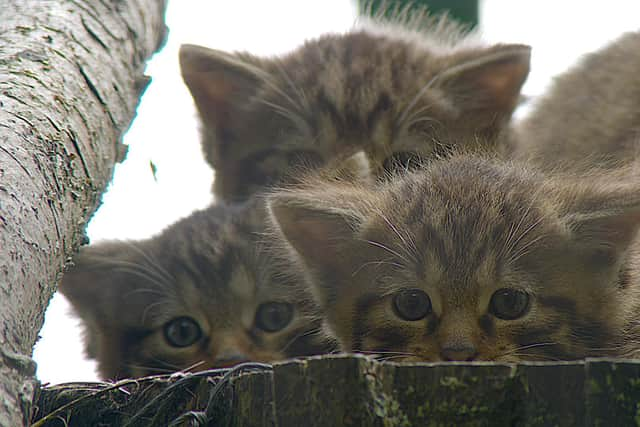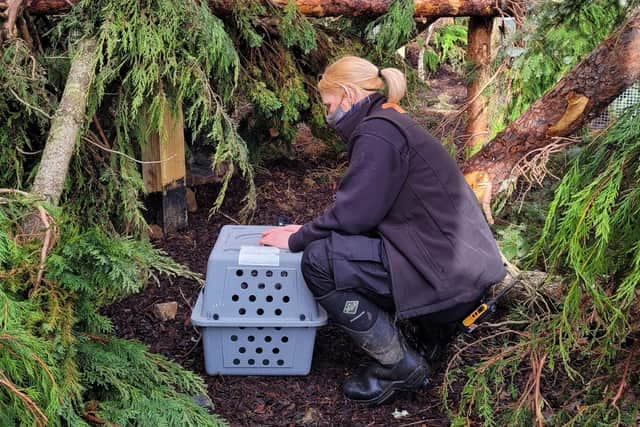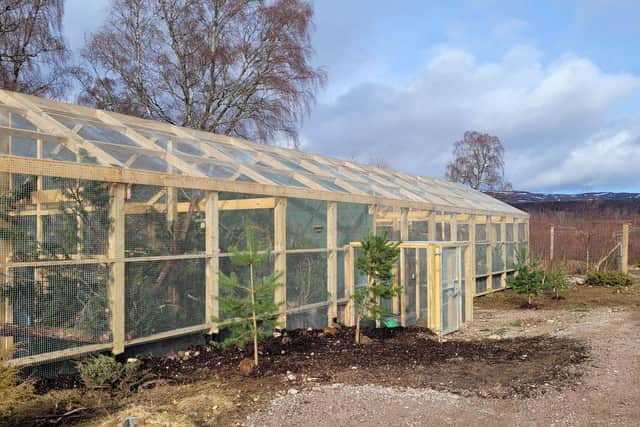Meet the Highland tiger who could hold the future of one of Scotland’s most iconic species in her paws
The young female wildcat, named Nell, has arrived and is making herself at home in the newly constructed enclosure at the Royal Zoological Society of Scotland’s (RZSS) Highland Wildlife Park at Kincraig.
It is hoped that any kittens Nell rears will be among the first cats to be set free next year as part of the Saving Wildcats project, which aims to restore the critically endangered species in Scotland.
Advertisement
Hide AdAdvertisement
Hide AdNell was born at Alladale Wilderness Reserve in Ardgay and then brought to the wildlife park earlier this month.


She will soon be joined by a further 15 wildcats at the centre, where the animals will learn vital hunting skills to make sure they can survive in the wild.
The cats taking part in the programme will be sourced from various places and selected for their genetic diversity and characteristics to give the next generation the best chances.
The off-show centre will allow experts to monitor the cats’ activities and provide veterinary treatment if necessary.
Wildcats are native to the UK and would once have been widespread.


However, changes in land use and persecution have seen massive declines, with the only remaining populations confined to a few areas in the Scottish Highlands.
The species has been declared “functionally extinct” in the wild, with as few as 300 genuine wildcats thought to remain.
Hybridisation with feral and domestic cats is one of the key threats of their continued existence.


Advertisement
Hide AdAdvertisement
Hide AdExperts believe captive breeding using the most genetically pure specimens and reintroduction is the only way to prevent their disappearance.
The Saving Wildcats project is led by RZSS in collaboration with government agencies NatureScot and Forestry and Land Scotland, as well as the Cairngorms National Park Authority, Norden’s Ark and Junta de Andalucía.
David Barclay, Saving Wildcats ex-situ conservation manager, said, “Saving Wildcats is an incredibly exciting partnership, bringing together the necessary resources and expertise to save Scotland’s iconic wildcat.
“Nell is the first cat to be introduced into our breeding for release centre at Highland Wildlife Park and she has settled well into her new surroundings.
“A further 15 cats will be arriving at the centre in the coming weeks, giving us a healthy, genetically diverse population to breed from.
“Offspring will then be transferred to larger pre-release enclosures as they mature, where they will undergo a dedicated training programme to prepare them for life in the wild.
“We hope the first cats will be ready to be introduced into a site in the Scottish Highlands in 2022.”
The Scottish wildcat, also known as the Highland tiger, looks similar to a pet tabby but is larger, has longer legs, a broader, blunter head and a distinctive tail with three to five black rings and a black, rounded end.
Advertisement
Hide AdAdvertisement
Hide AdThey prey on hares, rabbits, squirrels, rats, voles and mice, as well as grouse and other birds, fish and frogs.
A message from the Editor:
Thank you for reading this article. We’re more reliant on your support than ever as the shift in consumer habits brought about by coronavirus impacts our advertisers.
If you haven’t already, please consider supporting our trusted, fact-checked journalism by taking out a digital subscription. Visit https://www.scotsman.com/subscriptions now to sign up.
Comments
Want to join the conversation? Please or to comment on this article.